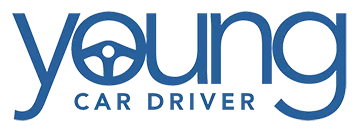Part exchange and car finance
What is part exchange?
Part exchange is when you use the value of your current car to help lower the cost of your next one. It can be a good option if you want to move quickly and don’t want to worry about the hassle of selling a car privately.
Can I part exchange my car if it’s on finance?
If your car still has outstanding finance remaining, you must settle the finance and become the car’s legal owner before you can offer it as part exchange.
Check the terms and conditions of your current finance agreement to see how to get a settlement figure and whether any early repayment charges will apply.
Once you have your settlement figure, visit the dealer where you’d like to part exchange. They will offer you a valuation. Remember that you’re under no obligation to accept this offer if you feel it’s too low.
If the amount offered is the same or higher than your settlement figure, you can usually let the dealer take care of the rest. They’ll liaise with your lender on your behalf, pay the settlement figure, and put any remaining funds towards your new car.
However, if the amount offered is less than the settlement figure, you’ll be in negative equity. This means you’ll need to pay the difference from your own pocket if you still want to go ahead with the part exchange.
What documents do I need to part-exchange my car?
To help your part exchange go as smoothly as possible, you may want to prepare the following documents in advance:
- The car’s logbook (V5C)
- The car’s most recent MOT certificate
- Any spare sets of keys
- Any service history that you have
H2: How can I get the best price for my part exchange?
Several factors can affect the price you’re offered for your part exchange, including overall market conditions and trends within the used car industry.
However, there are steps you can take to help you get the best possible price from the dealer:
- Have the correct documentation ready – a car with a complete service history may be worth more than one with a patchy record
- Clean inside and out – vacuuming the interior and putting a wax and polish on the exterior of your car could make a big difference.
- Make small repairs – taking time to fix any minor dents and scratches and making small repairs could work out more cost-effective in the long run as your car could be worth more than the repairs cost.
- Get a fresh MOT – if you have less than three months left on your current MOT, getting a new test done could make your vehicle more desirable on the used car market.
Alternatives to part exchanging your car
Part exchange isn’t the only option available to you when you’re looking to upgrade your car. It’s worth keeping in mind that you might be able to get more money for your car through a private sale. You may also want to consider waiting until your car finance agreement comes to its natural end before changing your car if you’re in negative equity.
